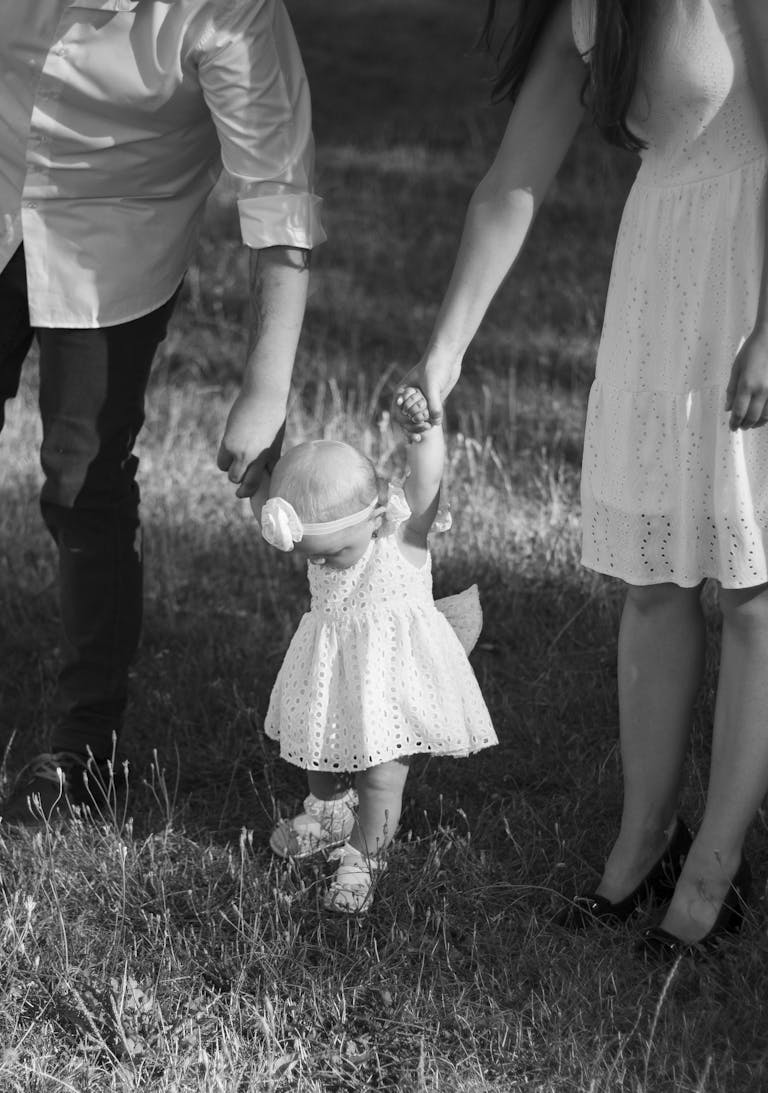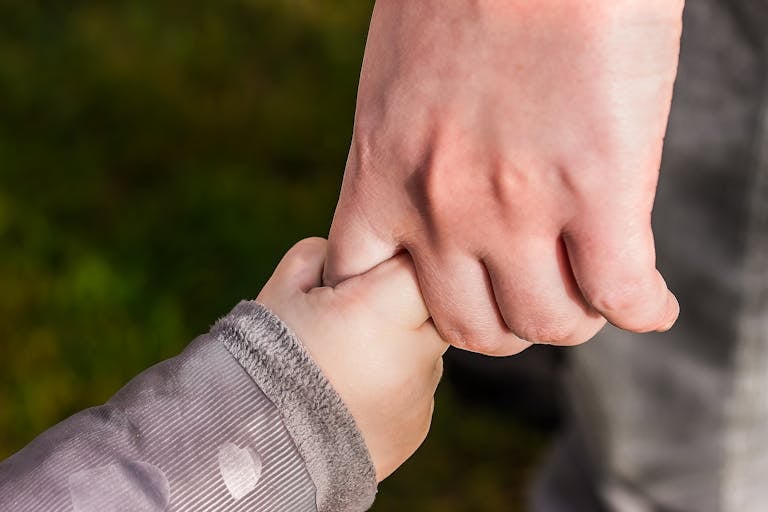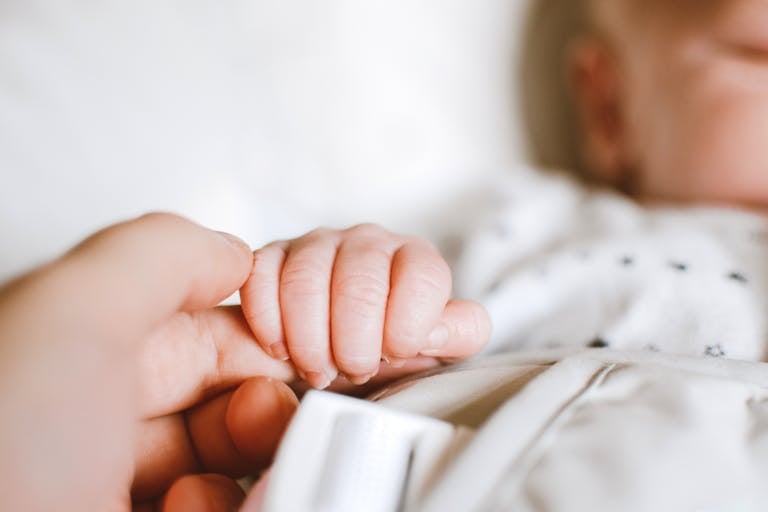Navigating baby sleep often triggers a cascade of questions for parents—fragments of concern woven with hope, a desire for reassurance meeting the reality of unpredictable nights. How many hours are enough? Is it normal for a baby to wake up repeatedly? Why do sleep patterns shift so dramatically as little ones grow? These questions are far from trivial; after all, sleep quality interlaces with development, emotional health, parental well-being, and physical growth. The landscape of baby sleep covers much more than darkness and lullabies—it’s a field shaped by neurodevelopment, physiological rhythms, external cues, and parental responses. Prepare for a deep dive, rich in scientific details and practical strategies, poised to illuminate your path toward calmer, more restorative nights for the entire family.
The Natural Evolution of Baby Sleep: What Science Reveals
Baby sleep tumbles through drastic transformations during the first years of life. For the newborn—the age of remarkable neurodevelopment—sleep may seem erratically fragmented: 14 to 17 hours daily, scattered in short, irregular stretches, dictated by hunger and an immature circadian system. Parents often find themselves wondering: Is this normal? Absolutely. At this stage, the concept of sleep cycles is still rudimentary, with REM sleep (sometimes described as “active sleep”) dominating almost half of each cycle, serving as fertile ground for synaptic pruning and neural growth.
As the months pass, a recognizable day-night rhythm begins to crystallize. Around three to four months, your baby starts consolidating sleep, often achieving 6 to 8 hours of overnight rest (interrupted by feeding needs), while daytime sleep organizes into 3 to 4 naps. Progressively, a circadian rhythm—the internal 24-hour clock—emerges, prompted by environmental light cues, feeding patterns, and evolving hormonal regulation (think of melatonin pulsing through the bloodstream, finally guiding those precious longer stretches of sleep). Average needs: 14–15 hours by three months, 14 hours by six months, gradually shrinking to 12–14 hours for toddlers, usually split between a single daytime nap and 10–12 overnight hours.
How do you know if your child’s sleep needs are met? Beyond clock-watching, focus on alertness, growth, mood, and engagement—these metrics reveal more than any strict chart.
Understanding Developmental Leaps and the Famous “Regression”: Why Sleep Can Suddenly Fall Apart (and Why That’s OK)
Sudden disruptions in baby sleep—commonly around four months, but also later leaps at eight to ten and twelve months—often feel like regressions, yet they embody forward leaps in cognitive and emotional maturity. Let’s dig into the science: During these windows, brain chemistry oscillates. Babies acquire new skills—object permanence, for example (the knowledge that you still exist even if they can’t see you). Sleep structure shifts, with cycles elongating and new phases of deep, slow-wave sleep emerging.
Suddenly, a baby who managed lengthy stretches may begin waking every couple of hours—seeking comfort, feeding, or simply reassurance. Biological sleep cycles in infants last around 50–60 minutes, leading to partial arousals between each, easily tipping into fully awake if new habits or associations have developed (being rocked, fed, or held). If your child has grown accustomed to certain sleep routines, changes in brain and body may make it harder to self-settle. The result? Shorter naps, frequent wakings, and increased fussiness—symptoms not of dysfunction but transition.
Sleep Cycles, Cues, and the Emerging Architecture of Night
Within each bout of baby sleep, an intricate dance plays out. REM sleep (essential for memory and learning) alternates with deeper non-REM sleep, which is vital for cellular repair and growth hormone release. These cycles, initially short, lengthen throughout infancy—eventually synchronizing more closely with adult-like patterns by toddlerhood.
Parents benefit from tuning into subtle “sleep cues”: fleeting bouts of yawning, eye-rubbing, brief disengagement from play, or crankiness. Missing these windows increases the risk of overtiredness—a paradox, as babies become harder to settle and stay asleep if they’re overly fatigued.
Building Sustainable and Healthy Baby Sleep Routines
Babies thrive with predictable cues—even as newborns require flexibility. Start with gentle, repetitive elements: a dimly lit room, soft music, a warm bath, and quiet cuddles before bed. For young infants, keep sleep onset after feeding and play, but avoid creating habitual sleep associations with feeding or rocking every time.
- 3–6 months: Incorporate a regular bedtime (usually between 6 and 8 pm), soothing rituals (story, lullaby, dim lights). Aim to place your child drowsy but awake—facilitating the ability to self-settle.
- 6–12 months: Structure bedtime routines persists, but with increasing emphasis on consistency (predictable bedtime, calm activities, and a soothing environment).
- Toddlers: Preserve routines for both night and naps, even as one nap becomes the norm around eighteen months.
A sleep journal can be a powerful tool—recording nap duration, wake windows, and bedtime patterns helps reveal connections between behaviors and sleep outcomes, offering strong evidence when consulting a pediatrician.
Embracing the “Regression” Phase: Compassionate, Science-backed Solutions
When baby sleep seems to unravel, stay present and persistent. Establish a dedicated sleep environment: a dark, quiet room with a firm, uncluttered crib boosts both safety and predictability—a concept called positive sleep association. If your baby is rolling, move on from swaddling to a wearable sleep sack. During the day, reinforce circadian cues with sunlight and play, but keep pre-nap and bedtime calm and consistent.
Promote self-soothing by gradually reducing your physical involvement—transitioning from holding to light touch, then mere presence, then soft vocal reassurance. Some partial night awakenings may resolve themselves if you pause briefly before intervening. Yet, if heightened distress continues, your comfort can restore a sense of security without inadvertently reinforcing sleep challenges.
Safe Sleep: Translating Medical Guidelines into Everyday Security
Biological vulnerability peaks during infancy, making safe baby sleep non-negotiable. The ABC rule—Alone, Back, Crib—forms the cornerstone of professional pediatric recommendations. Always place your baby on their back, utilize a snug-fitted mattress, and avoid any loose bedding, bumpers, pillows, or plush toys that could jeopardize breathing. Temperature matters: 68–72°F is optimal, as overheating raises risk for Sudden Infant Death Syndrome (SIDS).
Research strongly supports breastfeeding and pacifier use (after feeding is well established)—both associated with reduced SIDS incidence. Ethical science also flags caution regarding sleep products that promise safety beyond standard medical backing; rely only on recommendations from pediatric or regulatory authorities.
What Shapes Baby Sleep? Dissecting the Factors and Their Impact
Several threads intertwine:
- Feeding method: Breastfed babies may wake more often, largely due to quicker digestion; formula-fed babies might stretch longer spells between night feeds. Yet, every infant demonstrates individual rhythms.
- Night feeds: Continue as needed, especially during rapid growth or if hunger cues are robust—forceful night weaning isn’t universally advised and should be guided by your child’s development and pediatric input.
- Introduction of solids: Generally doesn’t impact sleep duration immediately. Occasional sleep disturbances can arise from new foods or temporary digestive upsets.
- Colic, reflux, teething: These common discomforts can fragment sleep, though the safest position remains flat on the back (even for babies with reflux). Teething-related fussiness responds to gentle support—cool gum massages or pediatric-approved remedies.
- Separation anxiety: Peaks after six months, part of normal attachment development. Combat with steadfast routines and extra reassurance.
A holistic approach—balancing nutrition, comfort, environment, and emotional connection—typically yields the best baby sleep outcomes.
Confronting Sleep Challenges: Evidence-based Approaches and Balanced Perspectives
Frequent night wakings, short naps, bedtime resistance—these struggles may accompany milestones (rolling, crawling, first words), illness, or routine shifts. Sleep regressions—notoriously at four, eight to ten, and twelve months—are transient, typically resolving with time and steady routines.
Some issues stem from entrenched sleep associations (e.g., needing to be rocked or fed to sleep). Nurture gradual independence: consistently place your child drowsy but awake, allowing short pauses before stepping in at each waking. Gentle, compassionate strategies often outperform abrupt changes, especially over the long run.
Positive Strategies to Strengthen Baby Sleep Habits
Consider a multi-dimensional approach:
- Bedtime ritual: Repetitive low-stimulation steps before sleep—baths, stories, gentle music—serve as powerful cues that night is coming.
- Drowsy but awake: Promote independence by letting your baby drift off in their sleep space, not in your arms.
- Tools of comfort: Swaddling (until rolling begins), white noise, or pacifiers can help, as can lightweight sleep sacks.
- Safe transitional object: Offer a soft item for comfort (past six months), always verifying it cannot obstruct breathing.
- Exposure to daylight: Day/night contrast helps regulate the circadian rhythm. Active, brightly lit daytime periods, followed by a darkened sleep environment at night, reinforce biological signals for sleep.
- Patience, consistency, and adaptability: No single routine works for every family. Adjustment is iterative—each child will reveal what works best as routines evolve.
Sleep Training Methods: Navigating Choices with Confidence
Sleep training generates deep debate—but options range from rapid approaches (such as Ferber’s graduated extinction—timed, incremental comfort intervals) to gentle, slow-paced strategies (the “no-tears” or chair method, for instance). Each has its place, but the most effective method is the one aligning with your family’s values and your child’s temperament. Scientific studies show that, when implemented consistently and in line with developmentally appropriate timing (typically not before four to six months), several approaches can improve sleep duration and lessen parental fatigue without adverse effects on attachment or emotional security.
Should uncertainty persist, or unique medical needs exist, professional input is always advised.
Myths and Facts: Clearing the Air Around Baby Sleep
Widespread assumptions abound—many unsupported by clinical evidence. For instance: Sleeping through the night? Not typical for most babies under six months. Babies cannot safely sleep on their stomachs or with bulky blankets—these practices heighten SIDS risk. High-tech products and wearable sleep devices may not actually protect your baby; only established safety measures should be trusted unless specifically endorsed by regulatory or pediatric authorities.
Trust your instincts, prioritize safe sleep practices, and consult reliable medical resources before embracing any new regimen or product.
Parental Wellbeing: Self-care as a Cornerstone
Chronic sleep disruption can be draining—both physically and emotionally. Sharing responsibilities with a partner, reaching out to supportive family or community networks, and honoring your own physical needs fuels resilience. Make time for nutrition, hydration, and, when feasible, brief moments of rest or relaxation. Parental self-care is inseparable from a child’s wellbeing.
If sleep challenges exert lasting impact on family life or personal mental health, it’s valid—indeed, prudent—to seek professional guidance.
Key Takeaways
- Baby sleep traverses remarkable changes within just a few years—understanding what’s typical brings relief and empowers healthier routines.
- Prioritize safe sleep practices: back sleeping, uncluttered sleep surfaces, and optimal room temperature.
- Consistency and gentle, repetitive routines pave the way for deeper, more restorative sleep—not merely for children, but for all family members.
- Most sleep challenges resolve naturally over time; compassionate, evidence-based strategies can expedite the process.
- Expert support is readily available—never hesitate to seek counsel when doubts persist.
- For tailored sleep advice, access to reliable resources, and free health questionnaires, consider downloading the Heloa app—practical support for parents and children at your fingertips.
Knowledge is your best tool; trust in your parental intuition, lean on science, and celebrate every peaceful night earned along the remarkable journey of baby sleep.
Questions Parents Ask
How can I help my baby distinguish between night and day?
It’s very common for babies, especially newborns, to have their days and nights mixed up. You can gently support their adaptation by creating a clear contrast between daytime and nighttime. During the day, allow plenty of natural light in the house, interact, play, and keep things lively. At night, keep the environment calm and dim, use a quiet voice, and minimize stimulation during feeds and changes. This gradual approach helps your baby recognize when it’s time to be active and when it’s time to rest. Rassurez-vous : ce décalage est temporaire, et les routines douces permettent un équilibre au fil du temps.
Are sleep products like white noise machines or special sleep sacks really helpful?
Many parents find that certain sleep aids, comme les machines à bruit blanc ou les gigoteuses, peuvent apporter du confort à leur bébé. White noise machines can create a soothing background that masks sudden sounds and mimics the comforting whoosh of the womb. Sleep sacks provide a cozy and safe alternative to loose blankets, maintaining an even temperature and helping your baby feel secure. While these tools are considered safe when used appropriately, il convient de suivre les recommandations des professionnels de santé et de s’assurer du respect des normes de sécurité.
What are signs that my baby is overtired, and what can I do about it?
Recognizing when a baby is overtired isn’t always easy, especially with varied sleep patterns. Typical signs include rubbing eyes, turning the head away, irritability, and increased fussiness. Some babies may even appear more energetic as they fight sleep. When you notice these signs, try offering a calm and comforting environment—dim lights, soft music, or gentle rocking. Consistency and observation help you find the right time for sleep, minimizing overtiredness and making settling easier over time. Rassurez-vous, cela fait partie de l’apprentissage autant pour vous que pour votre enfant.
Further reading:









